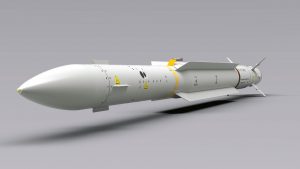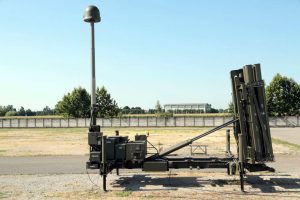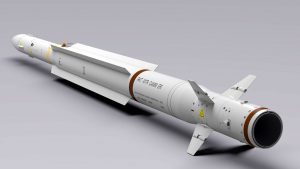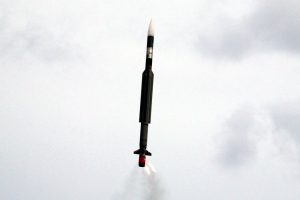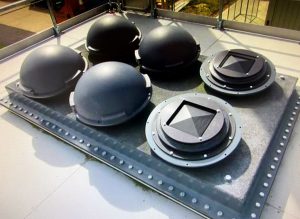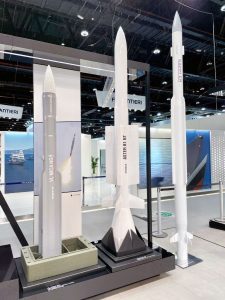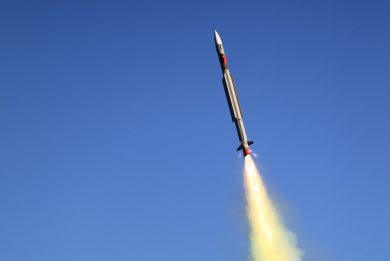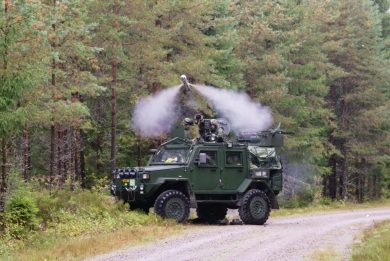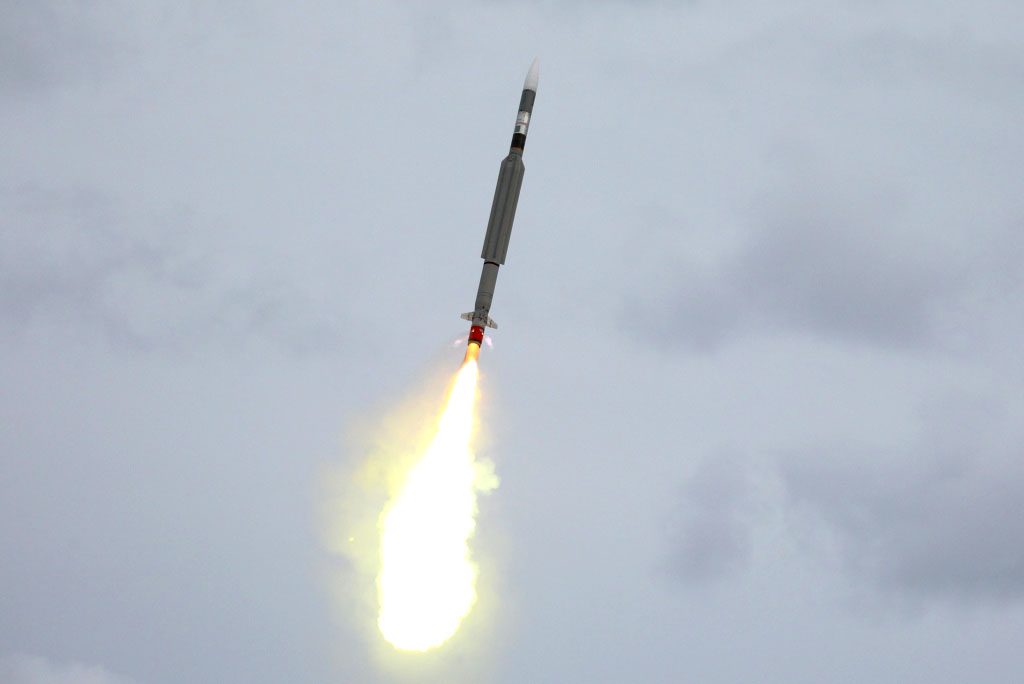
Albatros NG naval air defence system detailed
By Luca Peruzzi
Unveiled by MBDA on March 3rd, 2021 (click HERE to read the press release), the Albatros NG (New Generation) is another member of the family of surface-based land and naval air defence system centered on the CAMM (Common Anti-air Modular Missile) missile. EDR On-Line worked on the subject in order to get as many details as possible on this new product, the following article being based on the answers provided by the company to our questions. What remains undisclosed are details about the first contract obtained, first and foremost the identity of the launch customer.
Conceived and developed as a fifth-generation entry-level naval air defence system based on the CAMM ER (Extended Range) munition and characterized by reduced footprint and weight, low procurement and life-cycle costs, the Albatros NG is presented by MBDA Italia as a self-defence and limited consort ships protection system capable to be installed on a wide range of naval platforms, from first to second-line combatant ships, such as corvettes, large patrol vessels or light frigates, for both new shipbuilding and retrofit or mid-life upgrade projects.
As a successor of the Albatros naval air defence system based on the Aspide/Aspide 2000 munition, which was sold to 17 nations for naval (Albatros) as well as land (Spada and Skyguard) applications, the Albatros NG was conceived by MBDA Italia as a longer shooter with a range of over 40 km thanks to the CAMM ER munition, to cope with the full range of latest generation threats. These range from challenging anti-ship supersonic high-diving and surface-skimming, to transonic or subsonic low-signature cruise missiles, from manned and unmanned, fixed and rotary-wing platforms to precision-guided munitions, across 360° coverage and with a short reaction time in all weather and modern electronic countermeasures (ECM) operational scenarios.
The programme was initially developed with company funding, and today is being continued under a contract signed in late 2019 with the Italian MoD for both Air Force and Army Ground-Based Air Defence (GBAD) applications. The CAMM ER munition has been conceived to retain the maximum commonality with the short-range CAMM variant, with the insertion of airframe and components modification due to the longer range and national customization. The ER variant maintains all the benefits of the CAMM’s soft vertical-launch system, which has several advantages over ‘hot’ vertical-launch systems such as reduced minimum engagement range, launch signature and system complexity, in addition to lower maintenance and life-cycle costs.
While retaining the CAMM’s basic architecture (RF Seeker, warhead, active laser proximity, actuators, inertial measurement unit, electronics and power unit, two-way datalink and programmable systems), the ER variant is longer (4.2 meters) to incorporate an extended booster/sustainer rocket motor developed specifically for the MBDA missile by Italian company’s Avio, in a larger calibre (190 mm) propulsion section. Consequently, the overall weight of the missile has increased from 99 kg to 160 kg. The interceptor’s aerodynamics have also been improved, adding strakes to the missile central body which design has been subsequently refined, alongside small fins to the forward section and a redesigned and more performing front seeker radome. According to MBDA, improved kinematic characteristics embodied in the CAMM ER increase the maximum range, the over 40 km official range, this being however considered a conservative figure according to different industrial sources. The CAMM/CAMM ER family of munitions is equipped with the same solid-state digital active radar seeker, offering true all-weather performances with excellent clutter rejection capabilities. Having the co-design authority (with MBDA UK) and being the manufacturer of the seeker for the CAMM ER at Italy’s Fusaro centre of excellence for guidance systems of the European group, MBDA Italia also designed and produced the new ceramic front seeker radome applied not only to the CAMM ER but also to the CAMM munition.
The CAMM ER version is today in the qualification phase having already completed firing trials with success in 2019. These firing trials, of which the first was performed at long range and high apogee while the second at medium range and lower altitude apogee, successfully validated the missile aerodynamic behavior and maneuverability in addition to the munition simulation models. Having completed the critical design review, a subsequent firing trial, aimed to verify the seeker search and tracking functionalities in real conditions was planned in 2020, but no data were released on this test. The new munition is going through its final trials and qualification activities as planned. According to Italian MoD documentation issued to the Parliament, the ammunition development, qualification and integration with the future air defence system is to be completed in 2023.
In addition to its expanded performances, the Albatros NG is characterized by a reduced footprint and power consumption which facilitate the integration on smaller platforms, such as corvettes and larger patrol vessels, with the only requirement to work with a modern multifunction radar, capable to provide the necessary and precise target detection and tracking information at distance compatible with the enlarged range and engagement envelope of the CAMM ER, to fully exploit the capabilities of the new missile. Thanks to the CAMM ER performances, the system can be used for both ship self-defence as well as for protection of consort ships, but in the latter case this will depend on the distance between ships as well as the engagements geometry.
The Albatros NG is characterized by a system configuration conceived to offer reduced footprint, modular and flexible open architecture to satisfy both new shipbuilding and retrofit programme requirements. Exploiting the architectural and technical solutions already developed by MBDA UK for the Sea Ceptor CAMM naval version and by MBDA Italia for the Italian Navy’s newest PPA (Pattugliatore Polivalente d’Altura) combatant ship developed under the Legge Navale programme, the Albatros NG is centered on a modular, compact and low-weight maritime launching system, firing (weapon control) units and platform data link terminal (PDLT), all managed by the system command and control (C2) unit. The Albatros NG suite also includes a system control panel (SCP) to conduct pre-operational and safety activities on system components.
The CAMM ER maritime launching system (MLS) is based on the compact design developments by MBDA UK for the Royal Navy’s Type 26 and Type 31 frigates. The CAMM ER MLS solution is functionally identical to the single cells MLS for Type 23 frigates, characterized by a basic but cost effective solution, which sees the single missile launch canister with the same upper chimney assembly of the CAMM, maintaining the same bolting mechanism to the ship through a simple shock mount, without a dedicated launcher system and ancillaries with related weight, power and space requirements. The solution selected for the new UK Type 26 and Type 31 frigates’ MLS is based on a multiple of new six-cell (2×3) modules characterized by a reduced footprint allowing for more missiles to be accommodated in the same space of the Type 23 solution. The Albatros NG MLS is based on the same six-cell baseline solution, except for longer canisters due to the CAMM ER extended length. The modules are spaced to allow canisters inspection. Providing power, target reference data and initialization impulses to the munitions, the Albatros NG firing unit is derived from the solution developed by MBDA Italia for the PPA’s SAAM ESD system based on the Aster family of missiles. Each Albatros NG firing unit manages up to 12 munitions, requiring the installation of multiple firing units should a higher number of missiles be required.
The platform data link terminal (PDLT) comes from the adaption for shipborne operations by MBDA Italia of the CAMM ER land-based programme solution developed by the Fusaro centre, to provide the required range to cope with the more capable missile version. The shipborne solution will feature four small arrays, of around 40 cm per side, which can be mounted on the main mast to offer 360° coverage, or rearranged inside two turrets on the upper deck of the ship, each one accommodating three arrays covering 180°, as already adopted on Type 23 platforms. The PDLT, which also includes the power generation system below the deck, provides the two-way communication between the ship and the CAMM ER missile; target positional updates can be uplinked from the ship to the missile in flight, while missile status information and diagnostics can be sent back to the ship.
All these subsystems are managed by the C2 module hosted in a cabinet of (2020 (W) x 1720 (L) x 1500 (H) mm) which is the core of the Albatros NG system, also derived from system developed by MBDA Italia for the SAAM ESD air defence suite for the PPA platforms. The C2 module provides a number of functions, the primary ones being the threat evaluation and the weapon assignment, based on target information provided by the radar and the instructions coming from the command management system (CMS) operators, together with the management of both the PDLT and firing unit, as well as diagnostic for both the overall system and missiles. The C2 can work providing information to the CMS or to a dedicated console in a stand-alone configuration.
Based on the agreement signed in 2011 when the two MBDA companies (UK and Italia) decided to invest on the new GBAD (Ground Based Air Defence) for both national and export requirements, followed by the two UK and Italy Government statement of intent, the two nations recently signed the implementing agreement for system components and technologies workshare as well as export campaigns and rights. In addition to being the system co-design authority (with MBDA UK) and manufacturer of the seeker for the CAMM ER, MBDA Italia is also responsible for the design and production of the CAMM ER launcher system, PDLT and national land-based (Army and Air Force) air defence systems for the Italian MoD, as well as the other sub-components of the Albatros NG system. The CAMM ER ammunitions for national and international customers will be assembled in Italy with components supplied by MBDA group. More specifically, the locally produced seeker and radome will be sent to the UK where the front-end will be assembled and returned to Italy. Here, the missile will be assembled, including the warhead integration at the Italian MoD joint armed forces advanced ammunition centre (CIMA, Centro Interforze Munizionamento Avanzato) near La Spezia. Thanks to the limited footprint, performances, easy integration and reduced acquisition and life cycle costs, the Albatros NG is a strong candidate not only for international customers but also for the Italian Navy. A wide range of shipbuilders on the international market, in Europe, Turkey, the Middle and the Far East, is offering small-to-medium naval platforms, requiring a surface-to-air missile system, as an alternative to US and other national and international solutions. Although the Italian Navy decided to extend the life of the Aster 15 and 30 munitions, the CAMM ER will be the perfect candidate for platforms like the PPA Light and the future European Patrol Corvette (EPC) joint-programme with France, Spain and Greece, providing in the Italian case a reduced logistic footprint, thanks to the sharing of subsystems with the PPA SAAM ESD and complete ammunition commonality with Army and Air Force systems, compared to the current Navy’s inventory of Aster 15/30 and ageing Aspide missiles.
Photos courtesy MBDA

